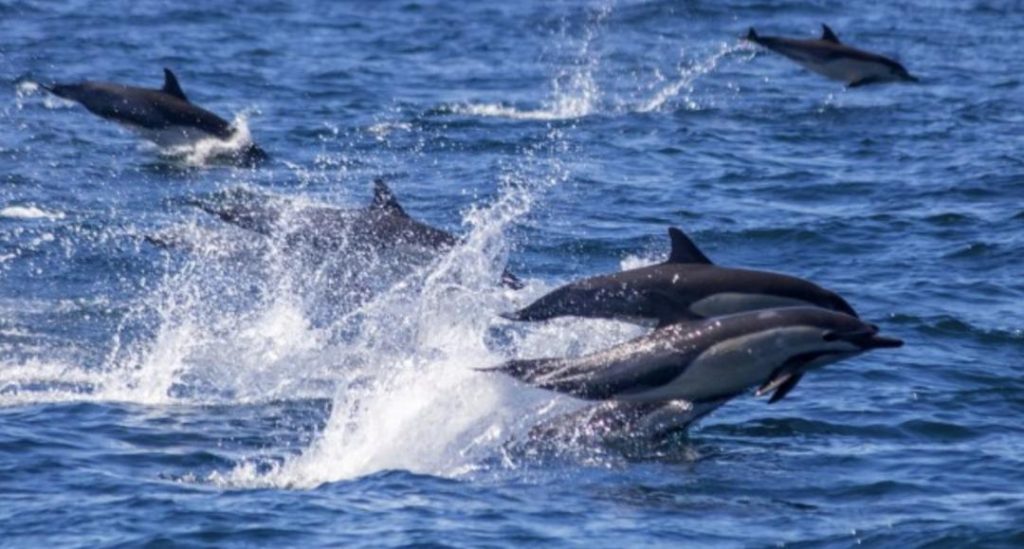
Dolphins & Whales Regularly Socialise with Each Other: Study
When we think of dolphins and whales, we often imagine these majestic creatures going about their daily lives, swimming solo in the vast oceans. However, a recent study has revealed that these intelligent and social animals are not as isolated as we thought. In fact, they regularly socialise with each other, engaging in playful and mutual interactions that are truly fascinating to observe.
The study, conducted by researchers from Griffith University, involved analyzing videos and photographs of interactions between baleen whales and dolphins, covering 19 species across 199 separate events. The findings showed that dolphins and whales frequently socialise with each other, often engaging in playful and mutual interactions.
One of the most common interactions observed was dolphins swimming near the whale’s head. This behavior was particularly prevalent among bottlenose dolphins, which were the most involved dolphin species in the study. In fact, the researchers found that bottlenose dolphins were more likely to initiate interactions with whales than any other dolphin species.
But why do dolphins and whales engage in these social interactions? According to the study’s lead author, Dr. Rochelle Constantine, “These interactions are likely driven by a desire for social connection and play, rather than just food or mating.” This is a significant finding, as it suggests that dolphins and whales are capable of complex social behaviour, similar to that of humans.
The study’s findings also highlight the importance of preserving and protecting these social interactions. As Dr. Constantine notes, “These interactions are not just interesting to observe, they also play a crucial role in the ecology and evolution of these species.” By understanding how dolphins and whales interact with each other, we can better appreciate the complexity of their social systems and work to protect them from threats such as habitat destruction and climate change.
So, what do these social interactions look like? According to the study, they can take many forms. For example, dolphins have been observed swimming alongside whales, playing with their blowholes, and even riding the waves created by the whale’s movements. Whales, on the other hand, have been seen breaching and slapping their tails, creating a splashing spectacle that dolphins eagerly join in on.
These playful interactions are not just limited to dolphins and whales. The study also found that other marine mammals, such as porpoises and seals, are also capable of socialising with each other. In fact, the researchers observed several instances of dolphins and porpoises playing together, as well as whales and seals interacting in a similar manner.
The study’s findings have significant implications for our understanding of the social behaviour of dolphins and whales. They suggest that these animals are capable of complex social interactions, and that these interactions play a crucial role in their ecology and evolution. By studying these interactions, we can gain a deeper appreciation for the intelligence and social complexity of these incredible animals.
In conclusion, the study’s findings are a reminder of the importance of preserving and protecting our planet’s incredible marine life. By understanding how dolphins and whales interact with each other, we can work to protect their habitats and ensure their continued survival. As we continue to learn more about these amazing animals, we are reminded of the incredible beauty and complexity of the natural world, and the importance of preserving it for future generations.






